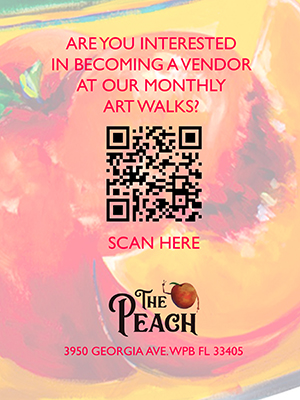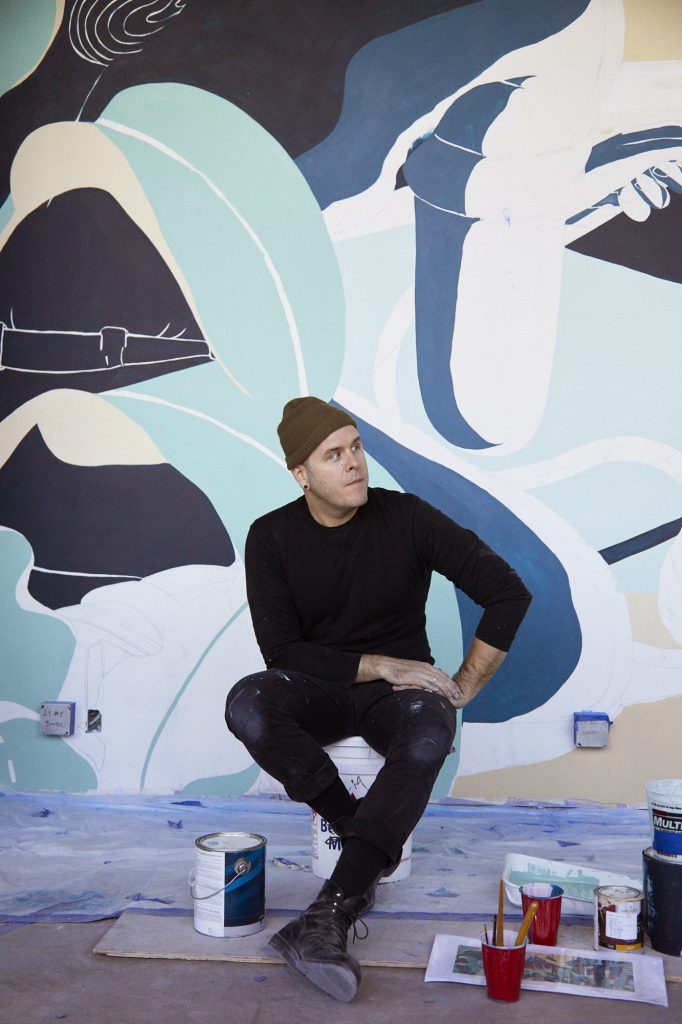
Bryce Wymer
The artist Bryce Wymer is a South Florida native based in Brooklyn whose jarring yet pleasing work draws from every brow —- high, middle and low — to address what he calls “human social progression and the driving relation between the powerful and the powerless.”
Social Realism, Matisse, punk/hardcore music, postmodernist art and graphic design all influence Wymer’s array of canvasses, block prints and sketchbooks. Born in Hollywood, Fla., in 1979, Wymer is the featured artist in this month’s PureHoney.
A copypasta version of his creative bio — no longer on his site but still blurbed across multiple art-zine and gallery pages — mentions Wymer’s interest in the “many layers of the human condition.” Some of his mixed-media creations — where collage, watercolor and India ink share the page — are a tactile expression of that layering.
His approach to progress, power and humanity is not gentle — “anxiety-tinged” is how he put it in an interview with It’s Nice That, describing the disembodied, dissected figures that populate his work. But all told Wymer captures a vastness of design aesthetic to create imagery that is approachable and enjoyable. Tappan Collective, a gallery representing Wymer, calls his work “a unique combination of bold graphic compositions and humanist abstraction.”
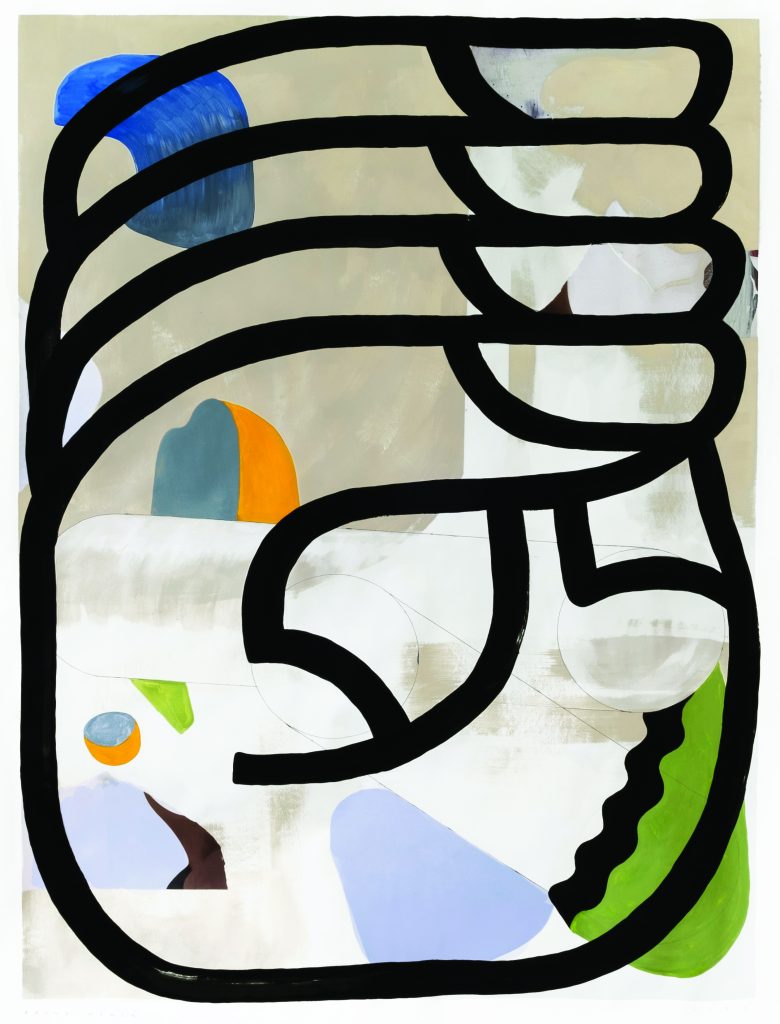
Somato
There’s a reason why Matisse’s wavy lithographs, paper cut-outs and other works have become so popular and ubiquitous: the pleasure in viewing work that is flattened with organic figures and finely drawn lines. Big, bold shapes remove visual and mental obstacles and — by dividing the canvas into positive and negative space — invite the viewer into gentle contemplation. Much like Matisse’s “Blue Nudes,” Wymer sketchbook pieces “Inflation SK BK” and “Motherboy” — also made from cut paper — are simple yet harmonious compositions.
But unlike a Matisse, the clean illustrative design Wymer utilizes is expertly married to wistful and clearly painted brush strokes, incorporating texture and layers that are often not present in prints and reproductions. Wymer works such as “Bow/Roll,” “Stick Up Kids” and “Hurricane David” provide lovely, painterly elements through the use of acrylic and India ink, mixing media on to a single canvas — the “high” and the “low,” the layers of humanity, the interactions of power and powerlessness, all made manifest.
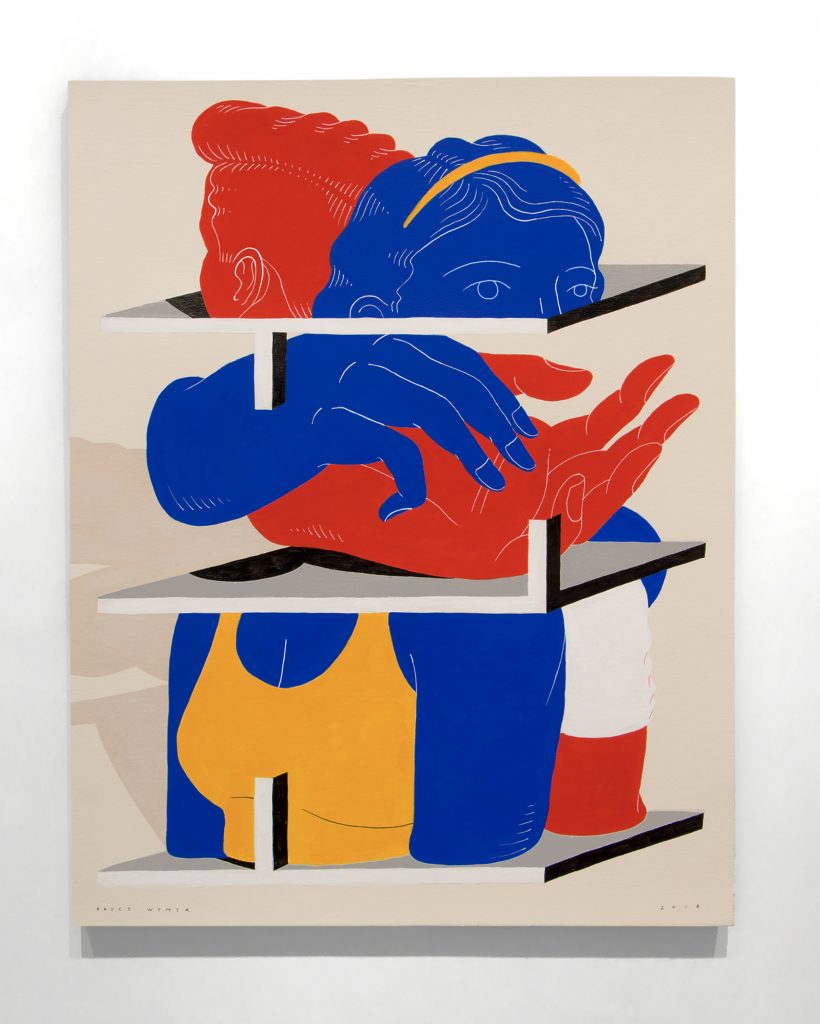
Reconciliation
For centuries the powerful have been the main subjects and consumers of art, while the powerless are often removed from the narrative altogether. Power was bestowed through divine rights, family lineage, money, and information — intellectual and tangible resources that were revered and apotheosized. The ancient Romans and Greeks immortalized people, both powerful and familial, through the creation of lifelike busts — a significant indicator of a person and their perceived social “value.”
Wymer inverts this equation, cutting off many of his subjects at the neck, giving his viewer just enough information as he makes other incisive decisions on how to edit his visual narrative. Heads (with necks) peer through bushes, maintain contemplative stares, water plants, and get sliced up like pieces of deli meat. Dismemberment is ever present —- heads and bodies cut into thirds and quarters, presenting cross sections of their inner workings, akin to the animal corpses of Damien Hirst. Anxiety is a sensible response to a Wymer painting such as “Prima Facie,“ whose shouting, broken-mouthed male head — also sectioned — depicts the “multiple layers of self that we create to get us through our daily lives,” Wymer told It’s Nice That.
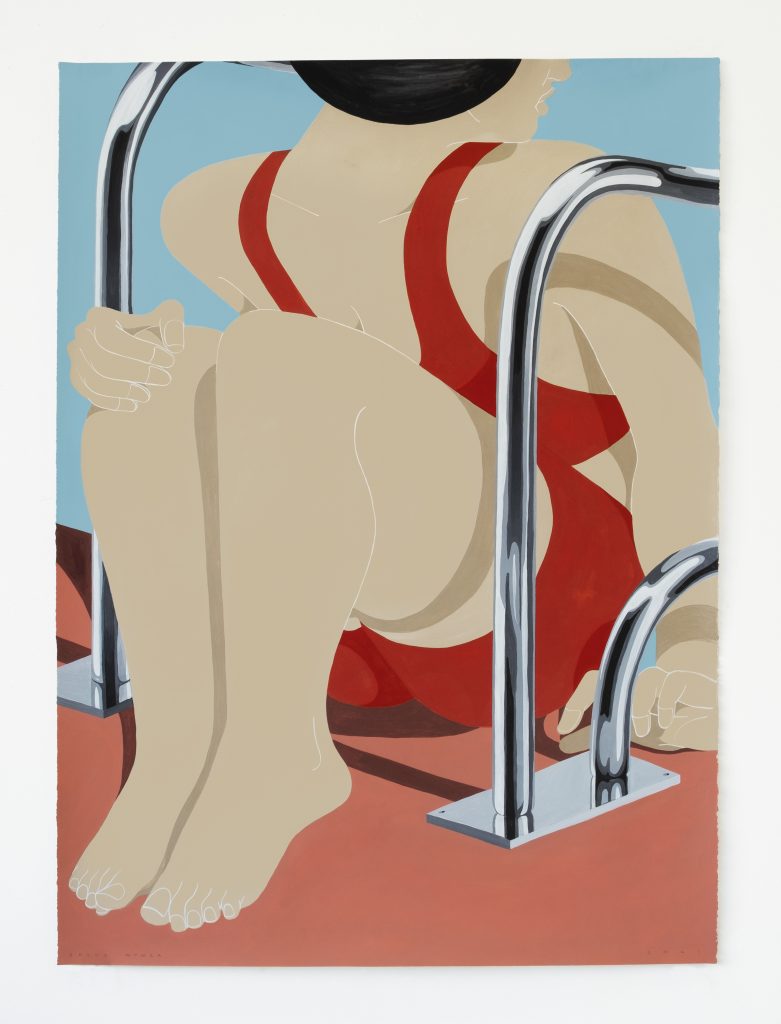
Beige Lanes
Where Hirst bifurcates his 3D objects with enough space to walk through, Wymer cuts his 2D objects into segments — or hierarchies, if you will, if viewed through his thinking about power relations. The majority of Wymer’s work is hand-painted, utilizing acrylics, India ink, and gouache, but one could easily take some of them for flawless digital creations. Wymer using paint to create an illusion of pixelated smoothness could be interpreted as further discourse about power — including the power of technology to impose itself on aesthetics.
Wymer, as it happens, has found success in collaboratively replicating his imagery across different media, including (actual) digital prints, sculpture and textiles. He has created designs for The New Yorker and The Washington Post, along with silk scarves, woven throws, and other objects that have made him one to watch.
Bryce Wymer’s work can be viewed at aflatearth.com and on his Instagram at @brycewymer ~ Veronica Inberg





